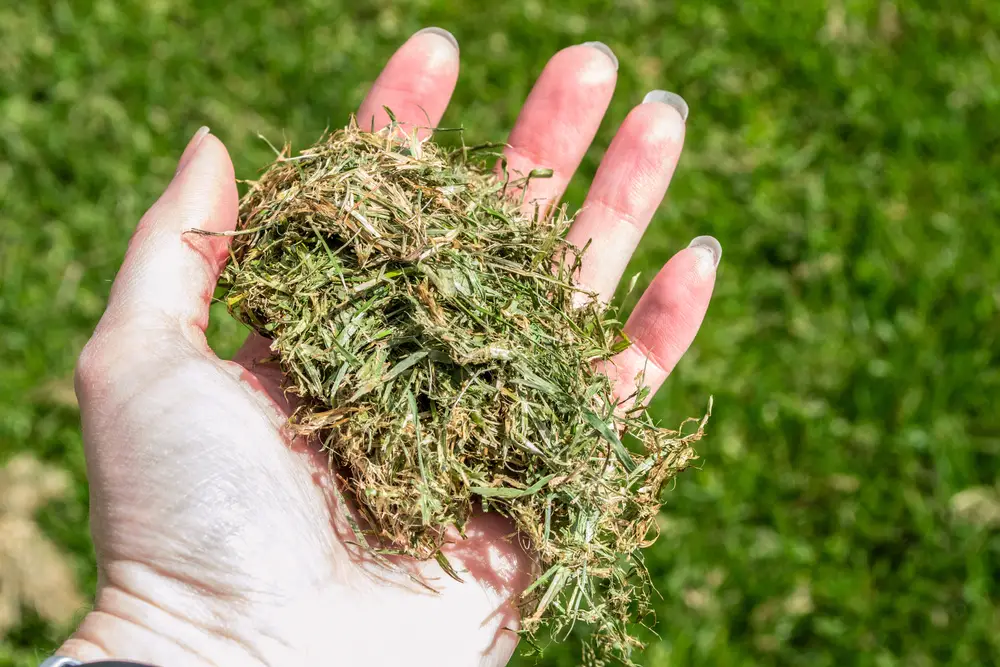Grass clippings are readily available whenever you mow your lawn. Many consider them a waste product and throw them away, but what if there were ways to use grass clippings to your benefit? And just what are those ways to use grass clippings?
The essential ways to use grass clippings are to:
- Leave them on your lawn
- Use as an organic mulch
- Put in the compost
- Use as a liquid fertilizer
- Mix them into the soil
- Use as food or bedding for rabbits, mice, and gerbils
- Use as a raised bed gardening layer
- Turn into a top dressing
- Dispose of them responsibly
In this content you’ll learn:
A Quick Overview Of What Grass Clippings Are
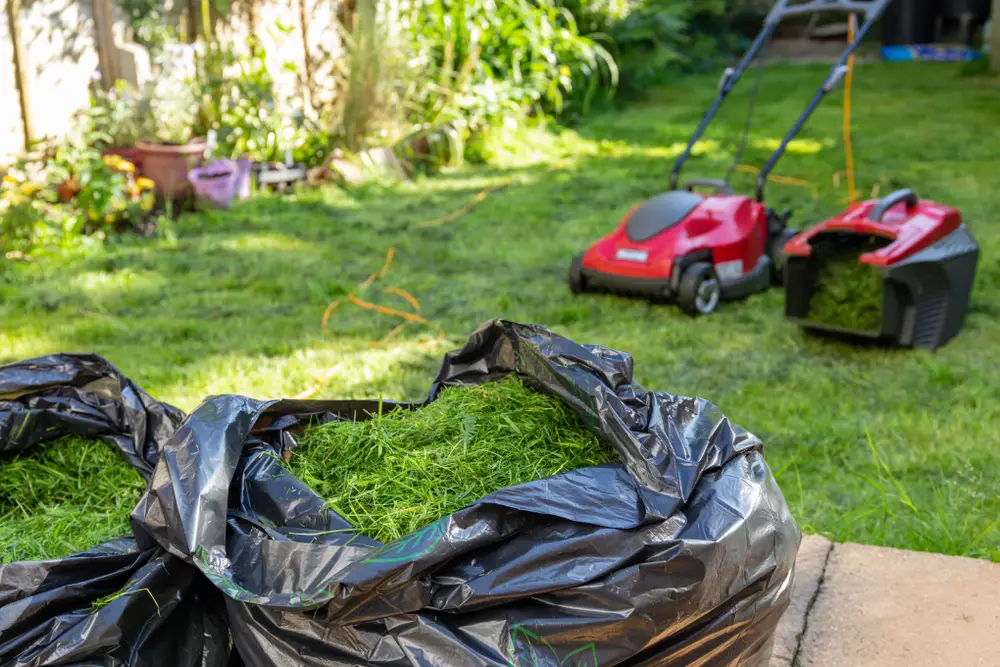
Grass clippings are the short-cut grasses left behind on your lawn when you mow. They may also get caught in the attached grass bag or catcher of some mower types. Typically, a lawn needs cutting once every week, so you’ll get a constant supply of nutrient-dense clippings to use in the ways described below!
Need-To-Knows For Using Grass Clippings
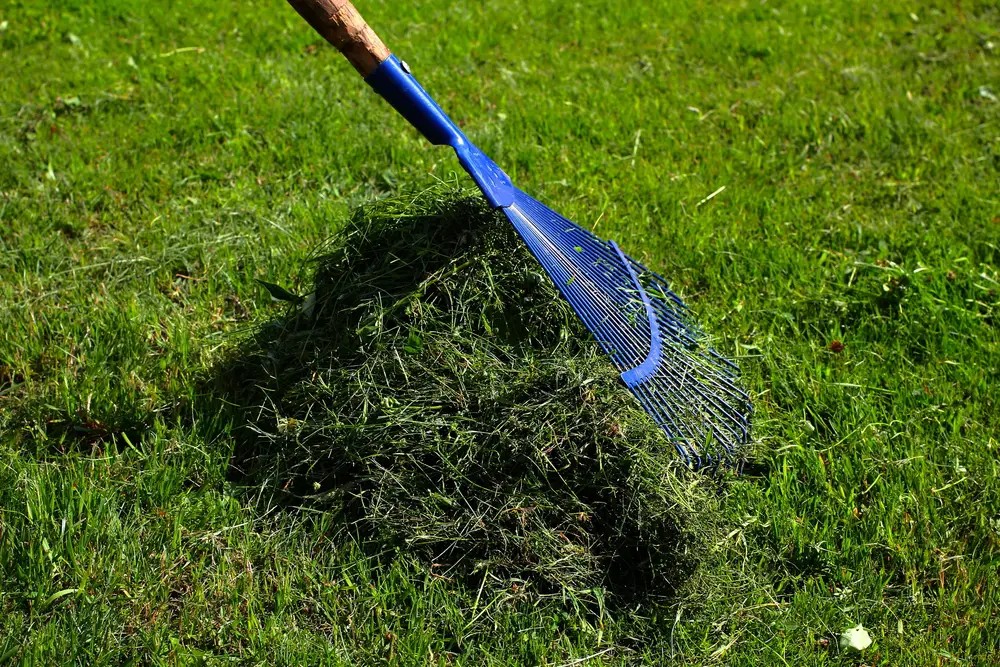
Before we jump into the many uses of grass clippings, we will cover why we even bother using them in the first place. This will include why recycling them is beneficial and when to and when not to use them.
Why Use Them
Typically, we treat grass clippings as a waste product, but these clippings have a lot of life left in them. Even when cut, grass still contains essential nutrients to feed our pets, enrich the soil for other plants, and ensure plants continue to absorb water and oxygen. Plants need oxygen to breathe, just like us!
What Nutrients Do Grass Clippings Provide?
Every plant on earth requires and contains three elements or essential nutrients on some level: nitrogen, phosphorus, and potassium. Among these three, nitrogen is the most important. This element promotes proper and stronger growth, reproduction, development, and photosynthesis in every plant.
As they decompose, grass clippings will leak their nutrients into your garden’s soil, providing a readily available source of nutrients, such as 4% nitrogen. Therefore, recycling your grass clippings this way is a good idea!
Using Grass Clippings
Now that we know why these widely available and easy-to-harvest grass clippings can benefit us let’s discuss when it’s best to put these benefits to good use.
The Best Time To Start Using Them
At the start of the year, wait to mow your lawn for the first time until the frost subsides and you see grass growing consistently and healthily. In my experience within the grass maintenance field, it’s best to wait until grass reaches about three inches to ensure it has had a proper chance to grow. After this initial mow (and harvest), any time is an excellent time to harvest your grass clippings.
The Grass Clippings You Shouldn’t Use
It is always best to avoid any negative outcomes when harvesting your clippings. Especially if you plan on using them in your garden to enrich your soil and plant life. That’s why it’s always best to use your lawn clippings only if you know your lawn is free of the following things.
Pesticides And Herbicides
Avoid using grass clippings for any reason if you treat your lawn with herbicides or pesticides.
It is also essential to remember if you decide to use grass clippings for pet food or bedding, as this can also poison them.
Although you can use grass clippings from a lawn that hasn’t been treated in the last two months, it’s better to avoid the issue entirely by not using them.
Weeds And Invasive Plants
Do not use your grass clippings if they contain lots of weeds. Using this mix can introduce weeds into your garden via seed transfer. This occurs when a plant’s tiny seeds are deposited into your garden’s soil, allowing weeds to grow.
9 Essential Ways To Use Grass Clippings
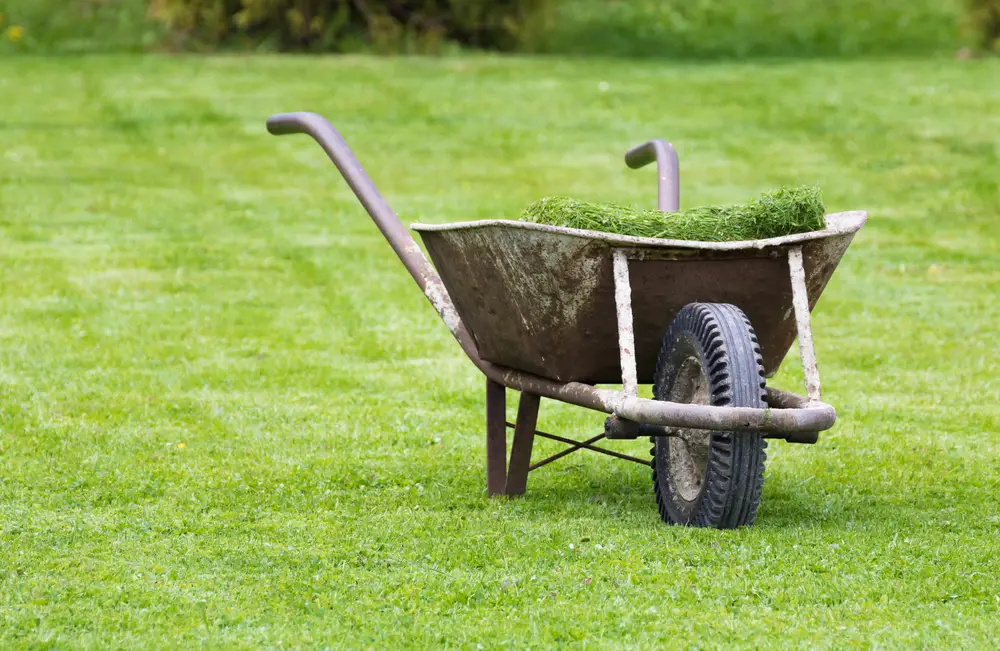
Now that we’ve discussed what grass clippings are and the critical need-to-knows before using them, we can discuss the nine most essential ways to use them!
1. Leave Them Where They Lie
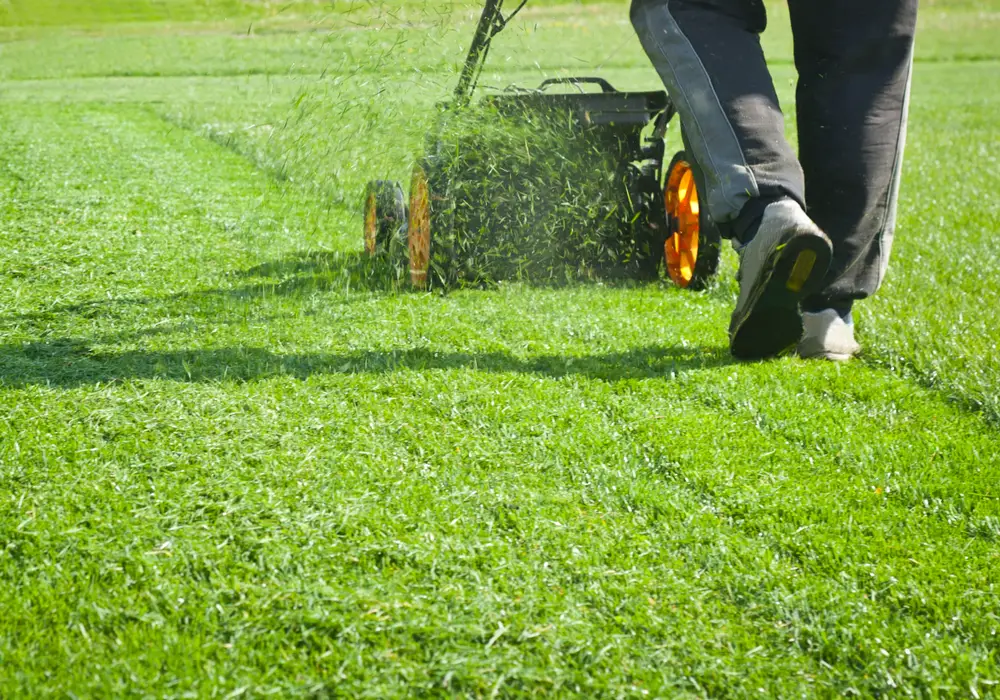
Feel free to let your grass clippings remain on your lawn if you have no use for them. Leaving them where they are returns your lawn’s nutrients back to its soil, benefitting it in all the same ways it would benefit your garden. This includes giving the same 4% nitrogen supplement back to your lawn, helping the turf become strong and healthy.
If you stick to mowing your lawn weekly and use the “one-third” rule (cutting only one-third of your grass’s total height at a time), the clippings won’t become an eyesore on your property. They will be small enough and will dry and decompose evenly.
2. Recycle Them As Organic Mulch
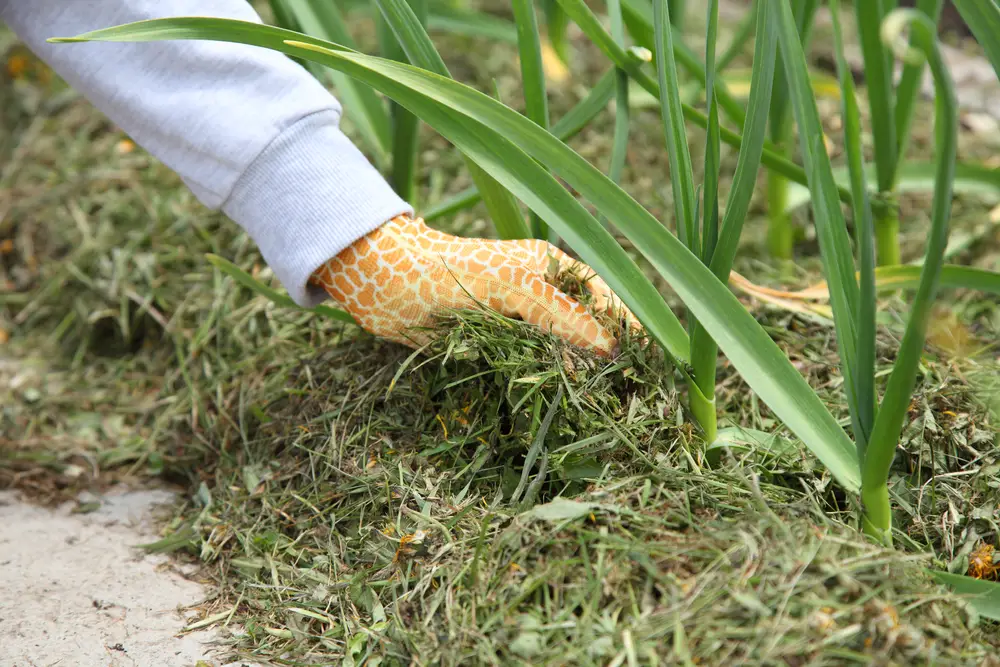
You can also use grass clippings as organic mulch in your gardens! As they decompose, they will act as a direct source of nutrients for your plants, helping them access these nutrients more easily. Grass clippings’ light weight will also help keep the soil breathable and assist with oxygen absorption into the roots of the plants.
How To Do It
Here are the steps to make this kind of mulch:
- Spread out and dry your grass clippings for 24 hours
- Collect the clippings and fluff them up to separate
- Spread them in an even layer on top of the soil (about ½ -1 inch thick)
- Mix in with soil around your plants
Tips
Here are some need-to-knows:
- The amounts will depend on the size and dimensions of the garden
- Don’t add too much, as this may lead to excessive water retention or diseases
- Dry out your grass clippings before you mix them into your garden, as this helps prevent matting
Matting occurs when large piles or thick layers of wet plant material, such as grass clippings, settle and dry. This creates large areas of dried-out solid chunks that prevent water and oxygen from reaching the surrounding plants and soil. By spreading the clippings when laying them out to dry in the sun for 24 hours before using them, you can prevent this from happening to your plants. You may even decide to fluff up the clippings a few times as they dry to ensure they remain separated.
3. Put Them In Your Compost
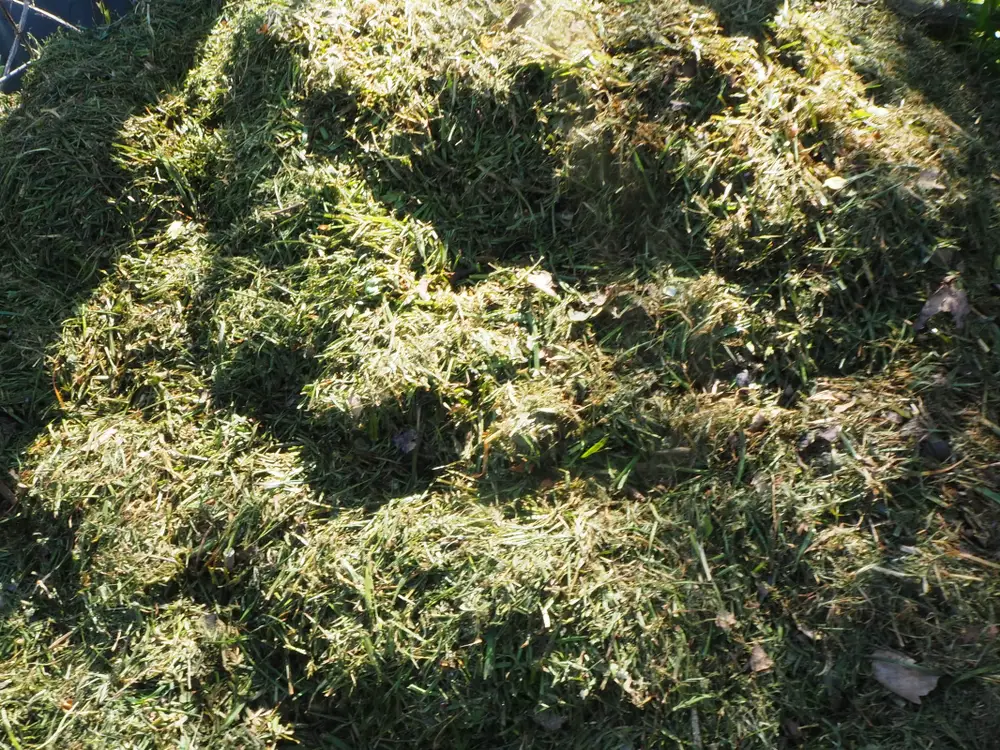
Grass clippings are also beneficial to your compost heap since they’re high in nutrients that allow plant life to thrive. Due to how fast the clippings break down, they will enrich the soil soon after decomposing.
The amount of grass clippings at your disposal will help ensure a constant supply of healthy compost is always available. All you have to do is add it to the bin!
A good and healthy compost heap requires both green and brown material.
Green materials are wet, quick to decompose, and provide nitrogen as they break down. These include food scraps, grass clippings, and rotten manure.
Brown materials are dry, decompose slowly, and provide carbon to the organisms that break down the compost pile. These include brown leaves, straw, shredded paper, sawdust, and woodchips.
4. Use Them As A Liquid Fertilizer

You can also use fresh grass clippings to make a liquid fertilizer for your garden.
Plants absorb liquid fertilizers faster than other fertilizer types, making the liquid versions more effective at delivering the nutrients plants need.
Here’s how to make liquid fertilizer from grass clippings:
- Use a garden bucket (about five gallons)
- Fill your bucket about two-thirds full of fresh grass clippings
- Fill the bucket with as much water as you can
- Let this mixture sit to ferment for 3-4 days in a partially shaded and warm area
- OPTIONAL: If you want to keep bugs out of your fertilizer mix, use a netting or mesh fabric to cover the bucket opening. Just make sure the covering is breathable to allow the gas the fermentation process creates to escape.
- After 3-4 days, strain out the grass clippings
Use between ½ and one whole cup of this homemade fertilizer for each plant. Pour the liquid into the soil surrounding the plant to ensure all nutritional benefits are sent to the roots for proper absorption.
5. Mix Them Into Your Soil
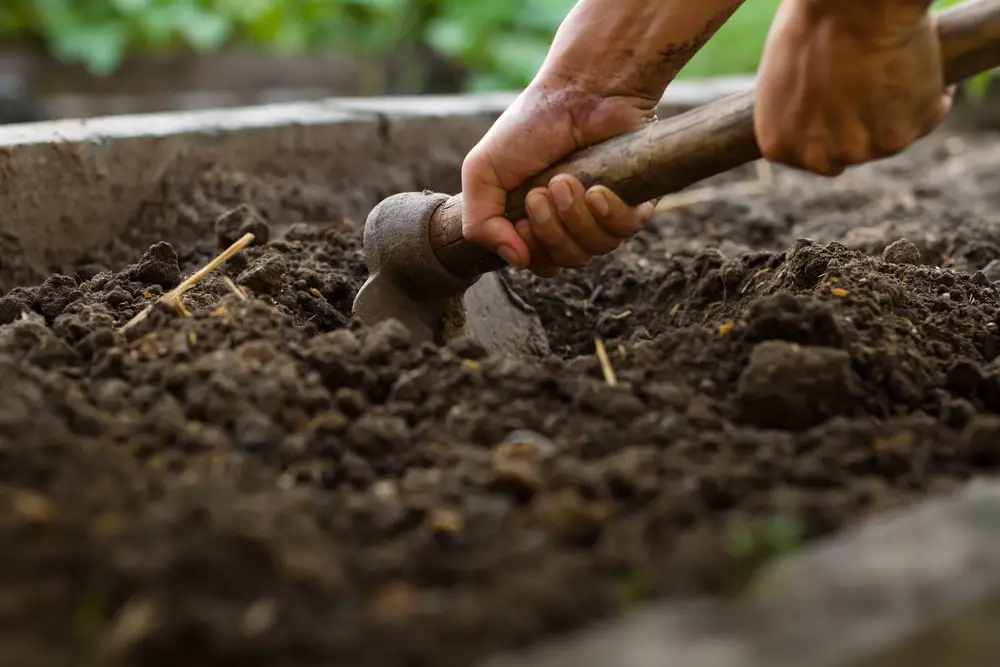
Mixing organic matter such as grass clippings into your garden soil has several benefits, including proper oxygen and water absorption and healthy bacteria production.
This practice is especially beneficial in sandy or clay areas unsuitable for dense plant life.
Typical Garden Soil
Your everyday garden soil is typically enough to help your plants get by. Still, you may feel the need to add more nutrients to increase your plants’ vitality or yield. In this case, you may add fresh clippings to the soil mixture.
All you have to do is fluff them into the soil already there, about as deep as the root system. To accomplish this, spread the grass clippings at a one-inch depth across the garden and mix them into about six inches of soil. If you still need to plant, this is easier to achieve, after which you may add more clippings over time.
Overly Sandy
Grass clippings are a good option for adding organic material to overly sandy garden soil.
Sand does not have the proper nutrient density or physical makeup to support some plant life. So, the higher content of sand in soil, the less likely ground will support plants. By adding grass clippings to the mix, you are adding more nutrients and density. This will provide a better soil environment for your plants.
Sand typically makes the surrounding area more dry, so feel free to add fresh clippings, which are made up of 80% water and will disperse this as they decompose. Do this in the same way you would for your typical garden soil. Mix enough to reach the root system (spread grass clippings in one-inch depth across the garden and mix in six inches deep).
Too Much Clay
If the surrounding soil contains clay, grass clippings are still an excellent option to add. With how compact clay is, it does not allow plants or their root systems to absorb oxygen properly. Adding grass clippings to the mix adds more breathable space for your plants within the soil.
Clay typically makes the surrounding soil environment dense and overly moist. In this case, you want to spread grass clippings that have been dried for 24 hours in a one-inch depth across your garden and mix them around six inches deep.
TIP: Use this method in soil areas with more clay than usual, not a solely clay environment.
6. Use Them As Food Or Bedding For Your Pets
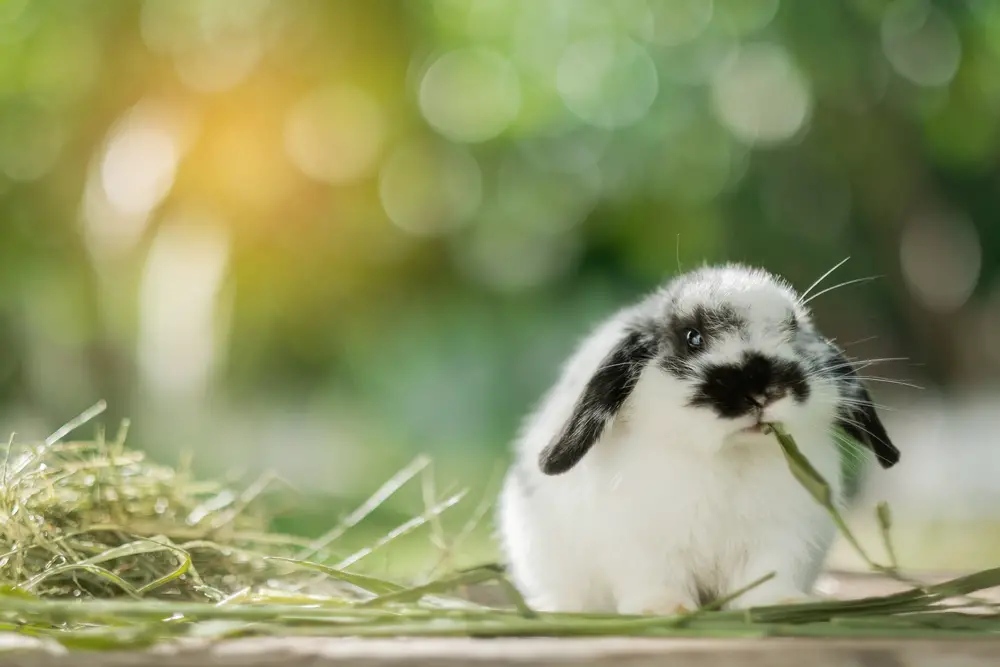
Grass clippings can also make an excellent bedding for your birds, rabbits, gerbils, and mice! Depending on your rabbit, gerbil, or mouse’s diet, you may also use these clippings as feed, but never for hamsters, as they are very delicate creatures, and the risks outweigh the benefits for them.
PRECAUTION: NEVER use grass clippings treated with any herbicides or pesticides! These chemicals will poison your pets’ lungs if inhaled and their digestive system and bloodstream if ingested.
Bedding
First, dry the grass clippings thoroughly for about 2-3 days, fluffing daily to disperse leftover moisture. After they are completely dried, use as much as you would like to disperse through the bottom of the enclosure as bedding. Make sure to replace this bedding once it is soiled, as with any other material.
Feed
Grass is an excellent source of vitamins and minerals rabbits require in their diet! Mice and gerbils can eat them too.
You may provide grass clippings as a treat or occasional secondary food source but do not replace their primary food source. Dry out the grass clippings in this case as well. Suppose they are not dried for feeding purposes. In that case, the grass clippings (fresh ones) will ferment in the animal’s stomach, and this can result in some severe gut health issues. You will know the clippings are dried enough for this purpose when sitting out long enough to become entirely golden in color.
7. Use Them As A Layer In Raised Bed Gardening
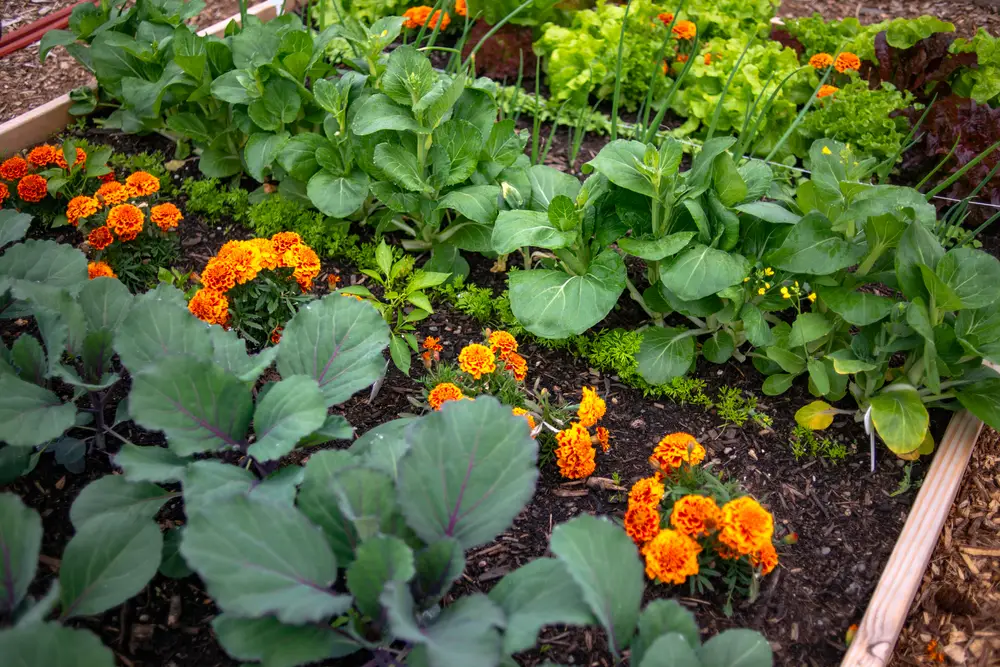
Raised garden beds are easily accessible and conveniently raised up in containers or reservoirs, typically surrounded by wooden boards or stone. This makes it easier for people of all ages to garden without getting down on the ground.
As with your regular gardens, raised garden beds also have uses for recycled grass clippings.
Layered Gardening (AKA Lasagna Gardening)
“Lasagna gardening” refers to a raised gardening bed technique where you layer compostable materials such as paper, cardboard, leaves, grass clippings, and other similar materials. You want to ensure you are layering with alternating carbon (your browns) and nitrogen-rich (your greens) materials.
It’s straightforward and cheap to make, and you will be using readily available materials, which makes it perfect for gardeners on a budget!
How To Make It
Instead of filling a raised garden bed with soil, you will freely stack one-inch-deep layers of your chosen compostable materials. You want to repeat the layers and use at least two layers of each material. These substances will decompose over time with the help of earthworms, good bacteria, and microorganisms. They will turn the whole pile into nutrient-rich soil!
If you want to plant right away, you can use this lasagna gardening as a base that will decompose over time and add 4-6 inches of compost soil on the top.
And that’s it!
Usually, this technique is not enclosed by wood or stones; it is more of a rustic style, but you may add some framing if that is more to your taste!
Bottom Layer (AKA Base Fill)
You may also use your recycled grass clippings as a base fill or “bottom layer” in your raised garden bed. You can avoid the high cost of processed topsoil using this method.
Most raised beds are at least 12-18 inches deep. In this case, add a bottom layer of about 2-3 inches of compressed grass clippings. Pressing the grass clippings down will mimic how the soil will do the same once poured on top.
8. Turn Them Into Top Dressing (Or Top Layer)
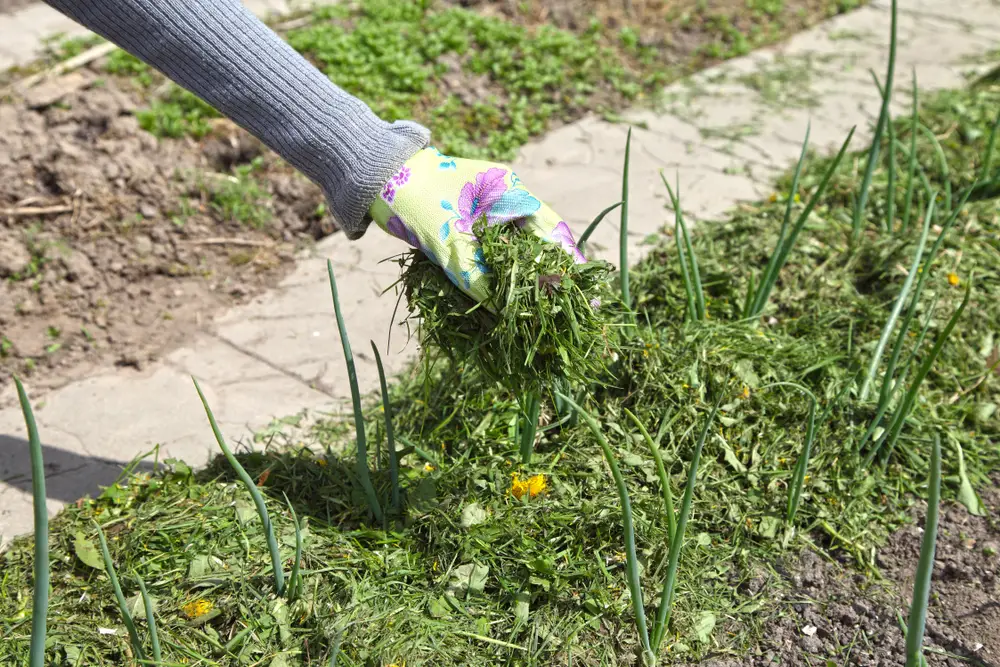
Using clippings as a top dressing will help your garden suppress weeds, retain moisture, and manage soil temperatures on some of the hottest summer days!
Typically, you want to dry your clippings for 24 hours to avoid matting before using them as this thin top layer.
Weed Suppressant And Temperature Regulation
Spreading a layer of dried grass clippings, about ½ to 1 inch thick, across the top of your garden will help suppress weeds by preventing sunlight from shining through to them. This filtering of the sun will also help keep the soil at a more moderate temperature, which is especially important on overly hot summer days when plants are at risk for heat exhaustion and burns.
9. Dispose Of Them Responsibly By “Grasscycling”
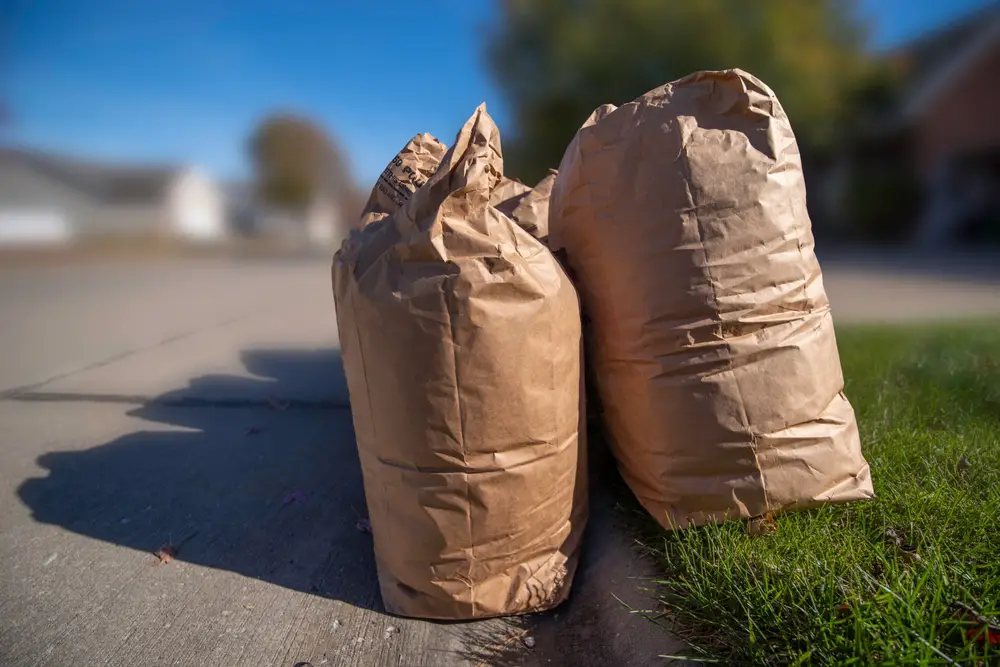
Sometimes it is best to dispose of your grass clippings. Whether it be because the lawn is treated with pesticides or is too weedy, it is best to avoid introducing a grass source like that to your gardens.
So, if your community has a “grasscycling” (or grass recycling) program, take advantage of the service by calling your local municipality and purchasing the proper paper bags!
Although this is an option in some communities, some may not provide this service since grass clippings are made of 80% water. This means they decompose quickly, so the community may prefer you return the valuable nutrients and water content to the soil. In other words, you may have to leave them on your lawn.
Final Thoughts
Grass clippings have many uses and are often underrated as a useful recyclable material, when in fact, they have many uses and can improve the health and happiness of other plants and animals.
So, after trying at least one of the above methods, let us know how it goes! Do you plan to try more than one? Let us know in the comments below and any further tips you may have.
